Tag Archives:from the library

26
MarCan a Book Heal the World
 I recently read a remarkable book. Actually, it was an audiobook narrated by the author, and once I began, I found it hard to stop. While not all narrators are created equally, I can confirm that this one is delightful; the soothing cadence of her voice is like a lullaby for the soul.
I recently read a remarkable book. Actually, it was an audiobook narrated by the author, and once I began, I found it hard to stop. While not all narrators are created equally, I can confirm that this one is delightful; the soothing cadence of her voice is like a lullaby for the soul.
Robin Wall Kimmerer’s Braiding Sweetgrass should be required reading. I mention this to everyone I’ve told about the book, and nobody asks for whom it should be required. Maybe they assume I mean school children. I actually mean it should be required reading for anyone who wants to live on the planet. Hyperbole? Probably. Yet perhaps a universal playbook is just what we need to heal the fragile ecology of our world.
The author is both a botanist and a member of the Citizen Potawatomi Nation, so her writing encompasses the dual lenses of science and indigenous wisdom. This book opens with a short retelling of the legend of Skywoman, an origin story of how the first people came to inhabit this world when one of them falls from the sky. Importantly, her survival is possible only through the cooperation of the creatures already here. Then, a reciprocal relationship is established when Skywoman cultivates seeds she brought with her. Soon plants and trees spread everywhere, providing an abundance of food for everyone. This story establishes the major theme of the book: that it is through reciprocity between people and the natural world and all its inhabitants that we can seek ecological sustainability. When Skywoman arrives here she is pregnant; caring for the plants of the land isn’t just for her own survival but for the future of her descendants. So there’s a lesson, here, about thinking beyond our own lifespan with respect to our environment. Surely this is a philosophy worth spreading.
At the same time, the author observes an interesting point: that Skywoman, the original woman, was an immigrant. She allows that some of her ancestors are Skywoman’s people while some of her ancestors are the newer kind of immigrant. The idea of all of us sharing the label of immigrant might prove too provocative for some, but in this divisive age it is a generous and encompassing idea, one that invites unity instead of discord. It also invites connections between past, present and future.
Another idea explored by the author is that of a gift economy versus one of commodity. She notes that unlike purchases, which conclude with the parity of payment, gifts create an ongoing relationship. A hand-knit pair of socks from a relative might require a note of thanks and, for instance, and wearing them during the next visit (even if you don’t like them) plus making a gift in return. Some gifts cannot be bought, as with ceremonial sweetgrass. Kimmerer tells of a friend who uses it for ceremonial purposes and although he is kept supplied by people, he may run out at larger gatherings. He would then have go to vendors and ask them for it; it can’t be bought or sold and still retain its essence for the ceremony. The relationships created by a gift economy adds a level of responsibility to each other that is absent from the equation of goods bought and sold. Although we live in a market economy, Kimmerer’s message is clear: to a certain extent, we make the choice to participate or not. She notes, for instance, that water is a gift not meant to be bought or sold, and we can choose not to buy it.
Kimmerer has a talent for storytelling and she is nimble in weaving together different accounts into a cohesive narrative. Her writing flows seamlessly between tales from her own personal and professional life to the larger histories of the indigenous people of America and the environment. Both of the latter subjects necessarily address mistreatment on a massive scale, which she is somehow able to tackle without making one feel overwhelmed and hopeless. All of the stories are connected as, she would say, we are all connected. One delightful example of her skill as a writer begins with the tale of an unproductive fishing expedition made by her grandfather one evening in September of 1895 that turns into his discovery of windfall of pecans. With nothing to carry them in, he doffs his pants, ties the leg holes with twine and brings home an impressive haul, despite the lack of fish. This anecdote flows into the origin of the word pecan, requiring a brief recounting of how her ancestors were forcibly removed from their lands three times in one generation. In their travels they encountered a grove of nut trees of a variety unknown to them, and simply called them nuts, or “pigan” which became “pecan” in English. Kimmerer then deftly steers the narrative to botany by noting that nut trees don’t produce a crop every year but rather follow a boom and bust cycle called mast fruiting. She explains that concept and hypotheses about what causes this cycle but also notes that it happens to trees as a group, not individually. Then, in the blink of an eye, she carries the idea of the seeming solidarity of these trees back to the sad history of how her people were divided and conquered by the offer of owning property as individuals, when they might have taken a lesson from the pecans and remained united.
This is but one example of many wonderful story webs spun out in Kimmerer’s book. Her lyrical language is the spoonful of sugar that helps the science go down, for those concerned about that aspect of the book. Her writing is also peppered with references to everyone from Lewis Hyde to E.O. Wilson. If you’re looking to branch out, numerous books from both of those authors are available in the Minuteman Library Network including E.O Wilson’s The Origins of Creativity.
Kirstie David is the Literacy/Outreach Librarian at the Morrill Memorial Library in Norwood, MA. Look for her article in the March 26, 2020 issue of the Transcript and Bulletin.
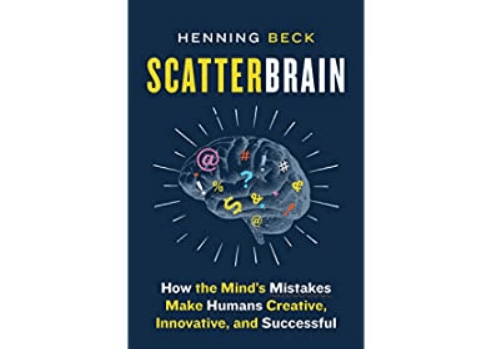
20
MarFalling Between the Cracks
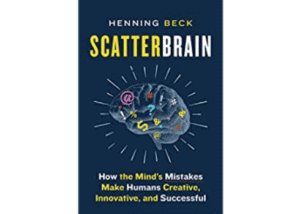 I think I’m officially losing it. In this case, “it” refers to pretty much anything of importance I lay hands on. My mother called it carelessness. It’s not a recent affliction with me, but it may be getting worse. It’s definitely getting more frustrating. After my most recent episode I realized I need to take action.
I think I’m officially losing it. In this case, “it” refers to pretty much anything of importance I lay hands on. My mother called it carelessness. It’s not a recent affliction with me, but it may be getting worse. It’s definitely getting more frustrating. After my most recent episode I realized I need to take action.
I come from a long line of losers. My forebears by marriage lost waterfront property on the coast of Maine by neglecting to pay the back taxes. My loved ones have misplaced everything from wallets to watches, cell phones to shoes, coats to cameras (remember those?). I managed to lose one of my few valuable pieces of jewelry, a single sapphire earring, at my daughter’s wedding in England last year. I beat myself up over that one for days.
Not long ago I got a call from a recycling company in Ohio. Had I left a laptop on an Amtrak train to DC? No, but the daughter to whom I’d lent it had, I discovered. I couldn’t even be mad at her because it’s exactly the sort of thing I’d do. My new friend in Ohio reset the computer’s password and mailed it back to her in Brooklyn, gratis.
A couple months ago I misplaced my keys. I lent them to one of my kids who borrowed my car and promptly returned them. Moments later I sped off to the Cape for the weekend in my trusty, keyless-entry Prius. When I pulled into the Harwich Stop & Shop and tried to lock the car containing my priceless (to me) pup, the key fob had disappeared. I checked pockets, purse, on the seat, under the seat, around the seat. Nothing. But since I was able to restart the car by simply pushing the ignition button I wasn’t too worried. The key, with its proximity sensor, had to be nearby. When I got to the house I turned off the engine, then immediately tried powering it back up. Upon hearing it purr to life I unpacked the Prius and figured I’d look for the key in the light of day.
Big mistake. The next morning my no-longer-trusty vehicle refused to start. But the key had been in the car last night! So I did the only logical thing—I repacked the entire car and tried again. Still nothing. Had I lost my mind in addition to my keys?
The neighbors got involved. Flashlights were produced and magnets deployed to search the ground cover by the driveway. Apparently starved for a challenge, they volunteered to turn my house upside down, which was far more alarming than the actual loss of the key. I ended up borrowing my neighbor Jen’s car and drove back to Norwood to retrieve the spare key which was, miraculously, exactly where it belonged. I returned to the Cape, refilled the tank, picked up a gift card for Jen, and frantically attempted to tidy the house in case my well-meaning neighbors pulled a fast one. Being a loser can be physically and emotionally exhausting.
With all the advances in technology, I wonder why they can’t design an app to find your…. fill in the blank. Like a universal Lo-Jack. The Find My Phone app has been a godsend, but why stop there? Someday such a thing will no doubt exist, but probably not in time to save me from myself.
For the next week, my spare key and I were inseparable. Pulling up to my house one day I heard a faint thunk from below. Again, I retrieved the flashlight to go exploring. And there it was, lying oh so innocently directly beneath the driver’s seat, taunting me with its presence. Dueling emotions flooded in: relief at finally having found the blasted thing and embarrassment at having to admit where. It must have slipped between the car seats and decided to come out of hiding only after I’d suspended the search. Why my Prius didn’t register the proximity sensor remains one of the Great Mysteries of Life.
I enjoyed a few blissful weeks free of separation (from my stuff) anxiety until the monster struck again. This time, the missing item is gone for good. On the plane to Mexico last week to attend a time-share presentation in exchange for some dubious perks, I whipped off an entire draft of this column on the stresses of preparing for a trip. With the deadline a mere day after our return, I had to get cracking.
So when the fourth consecutive day dawned cloudy and cool, I broke down and stuffed pen and pad into the beach bag to begin the editing process. Putting down the engrossing memoir, The House at Sugar Beach: In Search of a Lost African Childhood, by New York Times White House Correspondent Helene Cooper, I reluctantly reached inside my satchel. You can perhaps guess where this is going. My legal pad, alas, was por ningun lado–nowhere to be seen. In a word, desaparecida.
Frantic calls to Lost and Found, Housekeeping, and a visit to the front desk to personally scan the list of found items (lots of shoes, shawls, a stray Nintendo) proved unsuccessful. Seriously, who would want to abscond with a stranger’s chicken scratch? I wondered aloud. “No one,” my husband assured me. “I’m sure it got tossed.” It must have fallen between the chairs and been discarded during the nightly beach sweep.
There was obscure comfort in the knowledge that no matter how diligently I searched, my legal pad would never reappear. I pictured the crumpled yellow pages moldering away in a remote Mexican landfill, and moved on.
Determined that this latest loss would not be in vain, I vowed to mend my miserable, misplacing ways, or at least try. I could either pray to St. Anthony, the saint of lost things, or seek help from the library. During the COVID-19 quarantine I plan on perusing Organized Enough: the Anti-Perfectionist’s Guide to Getting and Staying Organized, by Amanda Sullivan. And if I don’t misplace that, I might make a stab at Mindfulness for Beginners: Reclaiming the Present Moment—and Your Life by Jon Kabat-Zinn. I’m particularly intrigued by Henning Beck’s recent Scatterbrain: How the Mind’s Mistakes Make Humans Creative, Innovative, and Successful.
That last one might be a stretch, but what have I got to lose?
April Cushing is the Head of the Adult and Information Services Department at the Morrill Memorial Library in Norwood, MA. Look for her article in the March 19, 2020 issue of the Transcript and Bulletin.
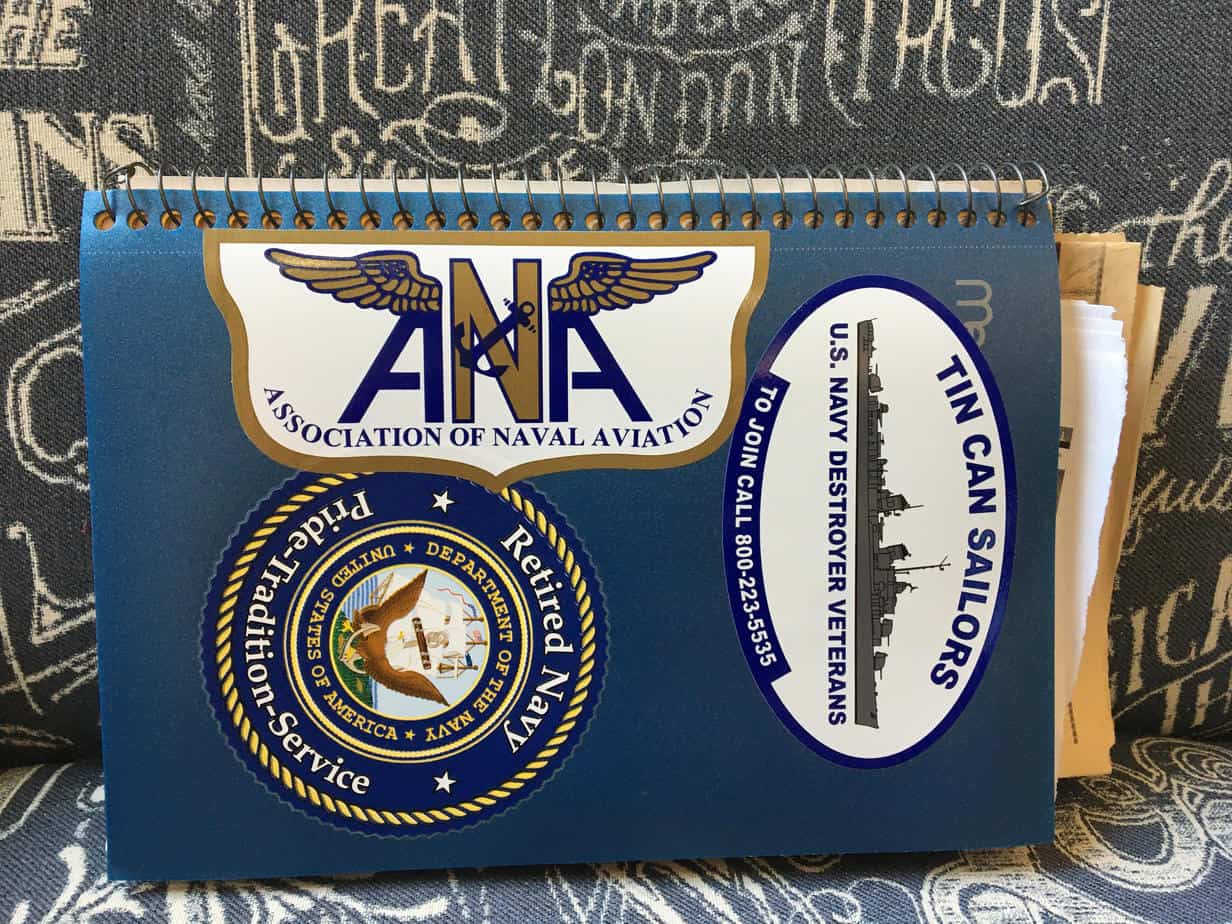
12
MarFinding a Treasure Trove
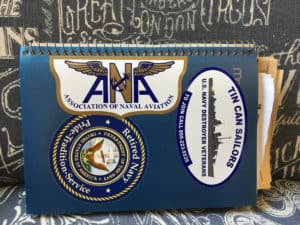 When someone you love is suddenly gone from your life, there are obvious things that you will miss—their captivating smile, their warm embrace, that goofy joke they told at every family gathering.
When someone you love is suddenly gone from your life, there are obvious things that you will miss—their captivating smile, their warm embrace, that goofy joke they told at every family gathering.
Not surprisingly there are other heartaches that we cannot anticipate or measure—things we never imagined that we would long for after a loved one passes away. This was the case with my father. This April it will have been two years since he departed and I am shocked at how quickly we have forgotten some of his character traits and idiosyncrasies. For a while, I couldn’t find any recordings of his voice, and I was distraught. Yes, I remembered exactly how he would say “Hello Nana-Banana” when he gave me a hug, but I wanted to remember more, each intonation. Thankfully, several friends and family members found recordings on their phones that they shared with me- one even highlighted his laughter which was a treasure to hear.
The reverse of this is also true, however. I have discovered memories of my father that I didn’t know existed. In our family, we always called him the “Mad Clipper” because he constantly cut out cartoons and articles from local papers. He would hand these out to a particular person he thought would benefit from a laugh or a tip. His clippings could range from a Wizard of Id cartoon to a Consumer Reports article about the best dishwasher brands, rated and ranked by price.
Just the other day I uncovered a notebook I had never seen before. The front is covered with a variety of stickers: Tin Can Sailors, Retired Navy Pride, Association of Naval Aviation (ANA). Inside I found a treasure trove—book reviews of his latest reads, mostly related to the military service. He also kept correspondence between his friends as they shared their latest “good reads” analysis.
This is like uncovering another glimpse into my father’s life and his interests. He read books that I would never have thought to read, and he took notes on them, too. This discovery dredged up a memory, too. Every year when we headed to a local Christmas tree farm, he made sure to exchange books with the owner. Turns out they had both served in the Navy and had similar interests.
Needless to say, I thought I might share these findings with you, dear reader. Granted, these titles are older, but the good news is they will be readily available since they’re not “hot items.” To be sure, you will quickly catch onto the nautical theme of these selections:
Halsey’s Typhoon: The True Story of a Fighting Admiral, an Epic Storm, and an Untold Rescue by Bob Drury and Tom Clavin. As if December 1944 didn’t have enough trouble of its own, this is the story of a popular naval hero, Admiral William “Bull” Halsey, who “unwittingly sailed his undefeated Pacific Fleet into the teeth of a powerful typhoon” later named Cobra. Admiral Halsey’s task had been to maneuver two dozen fleet oilers to provide fuel for the aircraft carrier USS Enterprise. When hit by the typhoon, three destroyers capsized. Any survivors of this catastrophe faced shark-infested waters, seventy-foot waves, exhaustion, and dehydration before rescue arrived. Thanks to Lt. Com. Henry Lee Plage, “who, defying orders, sailed his tiny destroyer escort USS Tabberer through 150-mph winds to reach the lost men.” According to my father’s notes: “Weather reporting was few and sketchy at best at this time. There wasn’t much warning of a typhoon. Ships were low on fuel and couldn’t refuel due to high seas and wind. They tried various methods and none worked.” Basically, hands down an amazing story of a lesser known World War II event.
Master and Commander by Patrick O’Brian. Many of our library patrons love to read O’Brian and his acclaimed Aubrey-Maturin series. That said, I had no idea that my father was also a fan, at least of O’Brian’s first book. In Master and Commander, the friendship between Captain Aubrey, R.N., and Stephen Maturing, ship’s surgeon and intelligence agent, is established. Set in the Napoleonic wars, O’Brian captures the life of sailors and servants in Admiral Nelson’s navy. As a quotation from the Guardian reads, “There are two types of people in the world: Patrick O’Brian fans, and those who haven’t read him yet.” I believe it’s time to read at least one O’Brian story so I can also become a fan, or try the Master and Commander DVD with Russell Crowe.
The Hungry Ocean by Linda Greenlaw. Many readers first learned of Captain Linda Greenlaw in The Perfect Storm, where her boat the “Hannah Boden” was the sister ship to the fated “Andrea Gail.” In this book, Greenlaw has adventures of her own during a month-long swordfishing trip in the Grand banks. My father was impressed with this Colby graduate’s sailing skills. He also took note of the average expenses of running a five person fishing boat and the hardships that they face on a daily basis. In Greenlaw’s own words: “If we don’t catch fish, we don’t get paid, period. In short, there is no labor union.”
Ten Hours Until Dawn: The True Story of Heroism and Tragedy Aboard the Can Do by Michael Tougias. I know my Dad loved to attend local library programs where local historians like Michael Tougias presented their latest books. I remember Dad sharing the story he had heard about the brave captain of the pilot boat, the “Can Do,” who set out to rescue the tanker “Global Hope” in the Salem Sound and the Coast Guard patrol that was caught in the maelstrom as well. According to Dad’s notes, Tougias “did a good job describing the main characters and their families and the results to each of the loss.” That sounds like a win!
Dangerous Waters: Modern Piracy and Terror on the High Seas by John S. Burnett. I can understand how this book would have fascinated a retired Naval Commander like my father. As he wrote, piracy is still a big problem for “whole ships disappear without a trace. Crews are captured, killed, tortured.” In particular, Burnett focuses on an area between Singapore and Sumatra called the Malacca Straits which is susceptible because “it’s a narrow area and very busy and a highway of ships going to and from the far east.” Amazingly, 25 ships per hour, 600 ships per day, pass through this area and pirates have no trouble boarding them by “climbing up ropes, poles, anchor chains etc.” Combine this read with the movie, Captain Phillips, and you will be staying off the high seas for some time.
The Good Times by Russell Baker. I’m not too surprised to find Baker’s second memoir on Dad’s list, since he also served in the Navy and grew up in the Depression. I remember my father regularly following his column entitled “The Observer” in the New York Times. Like my father, Baker spent his childhood delivering papers in his neighborhood and finding humor in so many day-to-day events. According to the Library Journal, “Aspiring writers will chuckle over Baker’s first, horrible day on police beat, his panicked interview with Evelyn Waugh, and his arrival at Queen Elizabeth’s coronation in top hat, tails, and brown-bag lunch.” Who doesn’t appreciate a man who brings a brown-bag lunch to the Queen’s coronation?
While Dad’s list consists of book titles that I would not have picked out on my own, it has been wonderful to add a little variety to my repertoire. I hope you think so, too. I also hope you discover a treasure like this from your own loved one, providing insight into their interests, hopes, and dreams.
Nancy Ling is the Outreach Librarian at the Morrill Memorial Library in Norwood, MA. Look for her article in the March 12, 2020 issue of the Transcript and Bulletin.

5
MarThe Printer’s Daughter
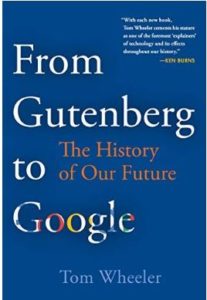 This past week, I was yanking some memento out of the bottom of a long-forgotten box, when a small metal plate slipped out of a booklet. It was a three by one-and-one-half inch engraved plate – a metal negative of a photo of my mother. I remembered the photograph well. It accompanied an article in a printed newspaper or newsletter published over a half-century ago.
This past week, I was yanking some memento out of the bottom of a long-forgotten box, when a small metal plate slipped out of a booklet. It was a three by one-and-one-half inch engraved plate – a metal negative of a photo of my mother. I remembered the photograph well. It accompanied an article in a printed newspaper or newsletter published over a half-century ago.
In the early 1960s, Mrs. Carolyn Fitzgerald had been elected to the office of President of the Women’s Auxiliary to the Typographical Union in Oakland, California. I flipped the metal right to left and revealed an image of a beautiful, perfectly coiffed young mother in her thirties. Flipping it again, of the metal plate exposed the negative image of the same photo.
That day, I was reminded of the newspaper printing business that defined my childhood. In 1959, my soon-to-be stepfather left his job as a typesetter at the Worcester Telegram and Evening Gazette. He and his brother, Bill Fitzgerald, had heard there were plenty of printing opportunities, particularly typesetting, in the newspaper industry in the San Francisco Bay Area. Like pioneers, they were the advance team, moving to the west coast, getting decent-paying union jobs, and setting up apartments to await their families. My mother, my brother, and I made the transatlantic journey from Boston to San Francisco on TWA and settled into that unique college town called Berkeley.
The Berkeley Daily Gazette was published in a low, industrial building in the heart of the city’s downtown. From our home, it was only a bit over a mile walk along tree-lined city streets. I remember my mother and I often visited as a child with my younger siblings in a stroller. Few women worked in the typesetting or printing press areas, as I recall. These were the fifties, of course, when wives and mothers tended children and homes. However, wives did drop by with children in tow.
The Gazette, of course, ran around the clock. Over the years, I remember my stepfather taking the later 3 pm to 11 pm shift to make sure the newspaper was ready for printing in the morning for delivery later that day. What I do remember is that he left the house every day in our one and only “automobile” to drive the short distance to work. He dressed in a suit jacket and pants, white shirt and tie, and spotlessly shined shoes. He changed into his perfectly-pressed work clothes as soon as he got to work. His New England penchant for formality never wavered.
I was fascinated by my stepfather’s work, and it might explain my early interest in books, fonts, and writing. The tiny tweezer-like instrument he held to pick up and place the letters, spaces or punctuation mark, placing them in metal lines. I imagined him lining up little letters to form words and columns. I’ve read since that the centuries-old Letterpress printing of manually placing each space and letter was abandoned to hot metal typesetting long before my stepfather worked at the Berkeley Gazette.
The Linotype was invented in the 1880s. Lines of type were composed using a method of entering text (sometimes on punched paper rolls), and the machine forms letters in a line cast into metal called a slug. This miracle of typesetting was never explained to me. In retrospect, I realize that my stepfather and his team of typesetters must have been placing these lines of type, and adding headlines into the frames that became pages of the newspaper. In the International Typographic Journal, Volume 64 (found on Google Books), the newest linotype machine was installed in the Berkeley Gazette in 1924.
Meanwhile, in other areas of the large newspaper composing room of the 20s to 60s, another specialist, a lithographer, was creating metal plates of negatives of photographs. The plates were then cast in rubber and set inside the pages that were laid out on a large work counter. The sheets were finished with captions, metal-lettered headlines, and linotype of thousands of tiny letters making up the news. The smells of ink and metal, of leather aprons and machinery and men, filled the air. A half-century later, I remember the noise of the presses in the background as if it were yesterday.
The newspaper business changed drastically in the later 1960s and 1970s. New technologies forced typesetters and lithographers to learn new trades that relied on other skills. Phototypesetting replaced the hot metal with cold type. By the early 1970s, my stepfather and his coworkers retired earlier than they expected, forced from work by technological advancement.
Ironically, it was my homemaker mother, her children growing up, who took phototypesetting classes and worked for a few more years in the industry. A decade later, these skills were replaced by computer drives, and her job, too, disappeared in the digital era. The rest, of course, is history as newspapers closed and merged. After nearly a century of publishing a daily paper, the Berkeley Gazette printed its last newspaper in 1984.
Every schoolchild learns that Johannes Gutenberg invented moveable type and the printing press in the fifteenth Century. His invention undeniably changed society. For the first time, people were mass consumers of information. Five centuries later, in the 20th Century, we sent men to the moon, learned to kill with mightier weapons, pushed medical milestones, and invented digital technology. Yet, from 1439 until 1960, the printing industry relied mainly on the manual labor of the printing trades to publish daily newspapers.
Last year, the Brookings Institution Press published From Gutenberg to Google: The History of Our Future by Tom Wheeler (February 2019). It is a history of that 500 years between the invention of the printing press and the revolution of Google. It is also a story of technology that is moving at lightning speed in the 21st Century. Wheeler’s book describes the ways that communication changed through the inventions of movable type to the telegraph, the telephone, the personal computer, the Internet, and beyond.
We’re all too aware of the changes in the publishing business in the last few decades as it has adapted to a digital and online environment. However, the changes of the mid-20th Century were significant in the news industry to the workers behind the scenes, those creating the pages for the printing presses that worked 24-hours a day. We owe them a debt, along with journalists, editors, printing press operators, and newsboys with making information abundantly available through them – in what we all relied on for the news.
Charlotte Canelli is the Director of the Morrill Memorial Library in Norwood, MA. Look for her article in the March 5, 2020 issue of the Transcript and Bulletin.
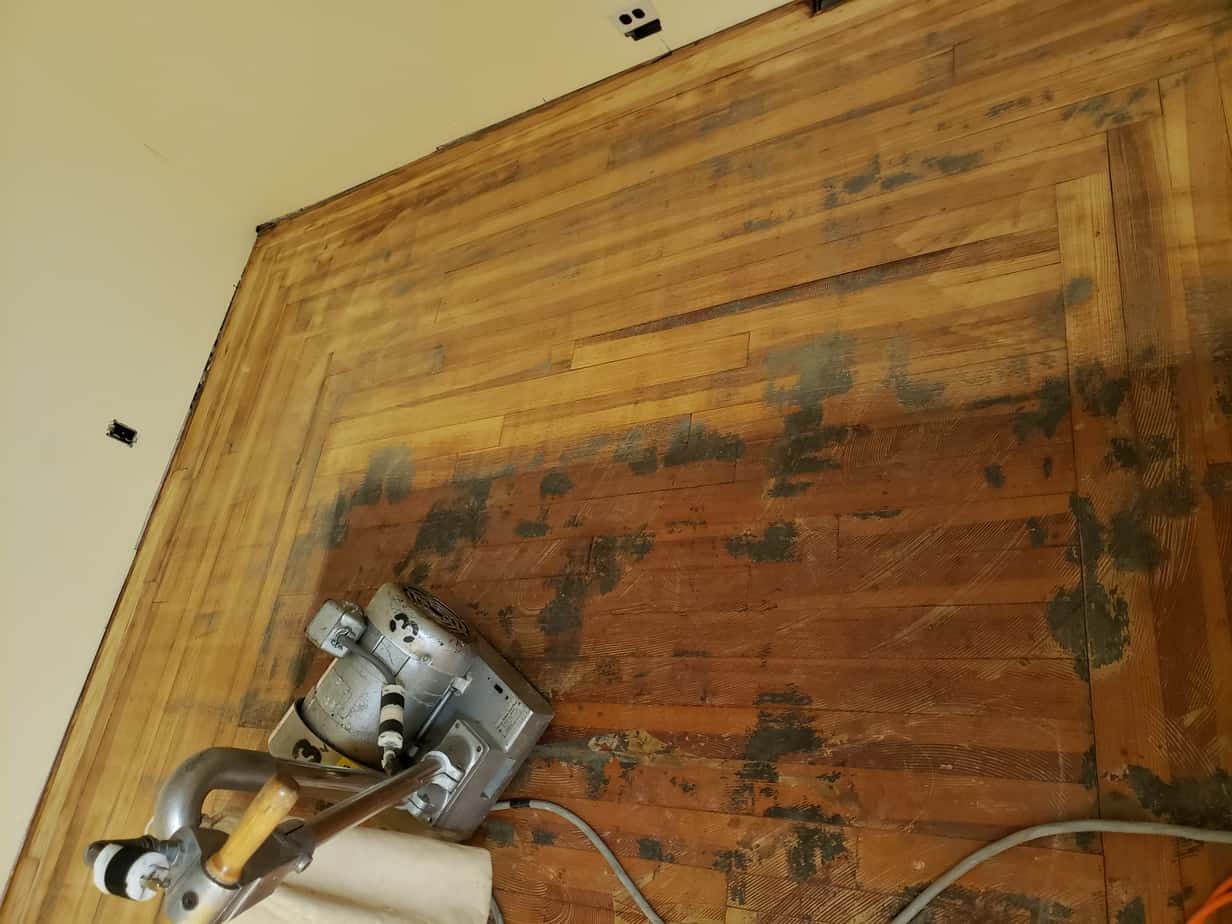
27
FebDispatches in Sandpaper: Send 20-Grit
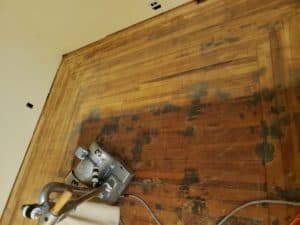 When you buy a fixer-upper house, sooner or later you need to start fixing it up before it can feel like home. And if you’re fixing the place up on a shoestring budget, you find creative solutions and invest sweat equity wherever possible. You start by checking the low-hanging fruit off the punch list, tasks like spackling mysterious holes in the original window frames, replacing lightbulbs, and gingerly tucking the porch door screen back into its frame with a butter knife.
When you buy a fixer-upper house, sooner or later you need to start fixing it up before it can feel like home. And if you’re fixing the place up on a shoestring budget, you find creative solutions and invest sweat equity wherever possible. You start by checking the low-hanging fruit off the punch list, tasks like spackling mysterious holes in the original window frames, replacing lightbulbs, and gingerly tucking the porch door screen back into its frame with a butter knife.
Next you move onto jobs that are a bit more disruptive and take more time and resources, but that go a long way towards improving the look of the house. Painting is a great thing to do at this phase. Taping window frames and baseboards is a time consuming precursor to painting, but is very much worth it if the color of your paint is significantly different than the wood trim, if you’re trying to preserve the natural-wood look of that trim, or if you’re painting an accent wall.
The painting step goes something like this: after taping, grab some paint testers and throw some swatches up on the wall. Abandon the entire color palette and get more testers. Commit to a color scheme and begin transforming the look of your walls. Have so much fun painting that you decide to paint every room in your house. Every. Room. Because it turns out that having one freshly painted room makes the rooms that previously looked just fine suddenly look as dingy and dated as a 1980s B-reel movie. Oh, and remember that wood trim you spent hours taping? Well, that needs to be repainted now too, because the charming antique cream suddenly looks like dishwater splashed at the edges of your crisp and tasteful grey walls.
Be prepared for a few necessities to take priority along the way, like needing to re-plumb a section of the nearly brand new furnace because the previous owners cracked it and now it’s leaking. Also rip out the carpet almost immediately, because on the one hand you have no idea how long it’s been there, and on the other your cat has made it abundantly clear that she smells dog and she is having NONE of it.
If you’re lucky enough to be surprised by hardwood floors under that nasty old carpet and if you’ve come this far on your fixer-upper journey, then it is well within your reach to refinish those floors yourself and bring them back to life. And if you’ve been putting off refinishing the floors for several months, give yourself a deadline by ordering furniture for those rooms that’s too big to fit through any doorway except the front door.
In all seriousness though, when faced with the logistics of refinishing your own floors, the project can seem huge and daunting. With a plan in place, advice from experts, and more than a little moxie, the whole job can be done in a weekend. To prepare for refinishing your floors, you’ll want to patch any broken or damaged boards and pull out any lingering carpet staples. With a hammer and nail punch, go all over your floor and pound down any nails that are at or above the surface of the existing wood; refinishing floors yourself can save a lot of money, but damaging the rental equipment on protruding nails would be very expensive.
Being a DIY-extraordinaire, you may be tempted at this point to use a hand sander to sand along the walls. I implore you resist this urge and spend the extra $25 for the room edger rental, since it will save you hours of labor and is really fun to use. Also invest in ear protection, a set of cushy comfy knee pads, and extra-strength Tylenol. If at all possible, try to find a local family-owned rental shop to rent the floor sanders and refinishing accoutrement. Big box hardware stores will also rent the necessary equipment, but by working with professionals who have specialized in this sort of work for years you’ll get expert advice and tips that make the job that much easier.
Top tip: if you’re refinishing a floor that still has an old stain and or finish, and that also has mastic or glue from old floor tiles, skip all other grits of sandpaper and go straight to the heavy-duty 20-grit paper. The person renting you the equipment may advise that you can get away with 36-grit alone, and it’s true that 20-grit paper is so intense that you really cannot let the machine stop moving or else you’ll wear a groove in the wood, but good gracious does it ever work like magic.
My final advice is that even though the sawdust catchment bags on these industrial sanders are actually quite good at gathering nearly all the sawdust, you will need to dust mop your walls after the project is done. Also your windows, baseboards, and ceiling beams. You may want to hang sheets over fixtures that can’t be moved, and over open doorways. Other than that, have fun and make sure you still have a way to get to the bathroom when the polyurethane is drying on your beautiful new floors!
Luckily the library has much more detailed and professional advice than mine when it comes to home improvement and DIY projects. Though dated, Grand Finishes for Walls and Floors by Matt Nikitas has indispensable sage advice like the sort you’d get if your dad were a finish contractor helping at every step of the process. Installing & Finishing Flooring by William Spence is worth a look, as is The Complete Guide to Flooring by Black & Decker. For more general home maintenance and DIY how-to’s, try How to Fix Anything by Popular Mechanics, The Complete Photo Guide to Home Improvement by Black & Decker, and The Ultimate Guide to Home Repair and Improvement by Creative Homeowner. If you’re not quite ready to roll up your sleeves and are looking for inspiration, we have tons of books about decorating, organizing, and refreshing your space and furnishings, such as Weekend Furniture Facelifts by Helen Carey and Styling with Salvage by Joanne Palmisano. I also highly recommend a few DIY magazines available through Flipster, such as Do It Yourself, The Family Handyman, Better Homes and Gardens, and Flea Market Decor. There are even more magazines available through the Libby app by Overdrive, such as HGTV Magazine, Country Living, Elle Decor, Good Housekeeping, and House Beautiful.
Good luck, fixer-uppers! As Red says in the classic Canadian comedy, The Red Green Show, “I’m pulling for you. We’re all in this together.”
Liz Reed is the Adult Services Librarian at the Morrill Memorial Library in Norwood MA. Look for her article in the February 27, 2020 issue of the Transcript and Bulletin.
